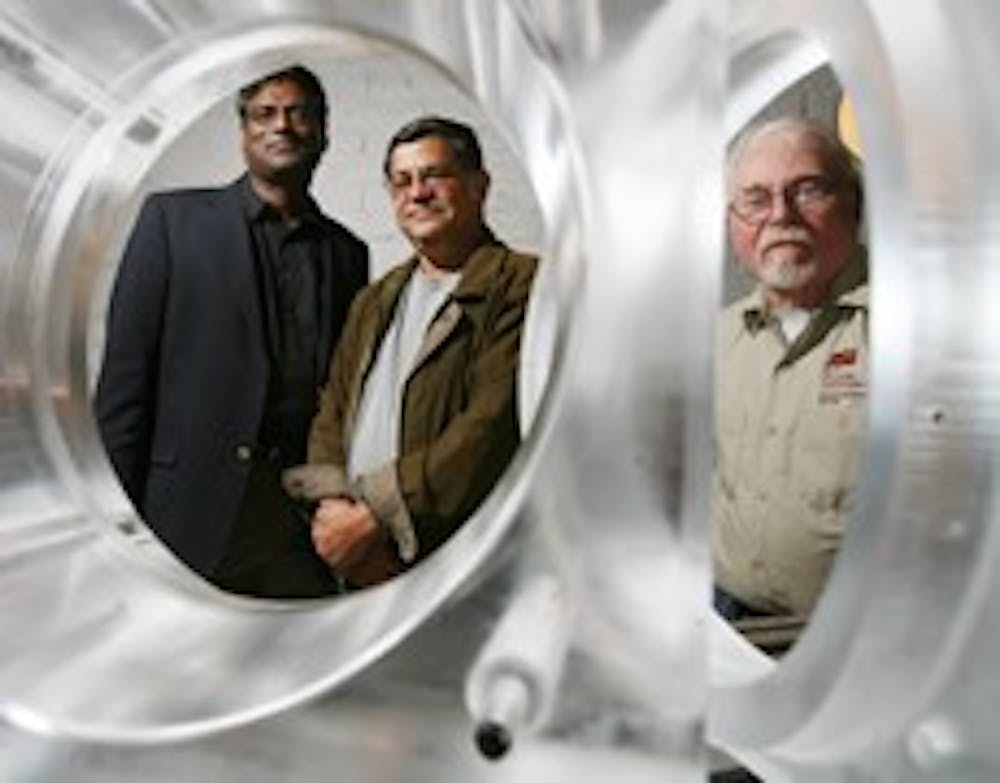ASU researchers are putting the finishing touches on a large-scale nuclear reactor model at the Tempe campus.
The model is part of a project to help Arizona Public Service Co. figure out a phenomenon that's been occurring in the Palo Verde Nuclear Generating Station's reactors.
APS spokesman Jim McDonald said the three Palo Verde units are refueled every 18 months, but, near the end of refueling cycle, there are pressure fluctuations in part of the reactor's cooling system.
"It's a phenomenon that occurs occasionally in certain instances," McDonald said. "And [the ASU research team] can help us understand the instances."
The ASU project is under the direction of Professor Harindra Fernando, director of the engineering college's fluid-dynamics program.
Fernando said the Palo Verde reactors need to be investigated because the fluctuations could be causing an issue related to power production called "pre-trips." The engineers hope to determine what is setting off pre-trips, or alarms, which are designed to alert the operators to get involved in monitoring power production.
"This is a nuisance to the operators, and Palo Verde engineers are concerned that this may even lead to trips that shut down the plant — causing huge economic impacts," Fernando said.
However, the fluctuations do not pose safety issues, only production issues, Fernando added.
To figure out why these pressure fluctuations are occurring, Fernando and his team have been building a one-fifth-scale model of the reactor that is hydraulically similar to the actual reactor. Then sophisticated measurement techniques will be used to track the flow and pressure, Fernando said.
"We can extrapolate the measurements taken from the model to the real situations," he said. "This will help APS engineers to make a decision on how to avoid pre-trips."
Phoenix-based APS approached ASU for this project because of the school's resources and location.
"ASU is a tremendous resource to our company for future employees and technical expertise," McDonald said.
Fernando said his group has helped solve issues at Palo Verde in the past, which is why APS asked for their assistance again.
Fernando said they are planning to finish constructing the model by the end of March. Testing on the model will then last for about two months.
"In addition, we have built up a computer model to simulate the flow," he said. "Information from both the computer model and the laboratory model will be used to understand the root causes of pressure fluctuations."
Reach the reporter at: charlsy.penzino@asu.edu.




